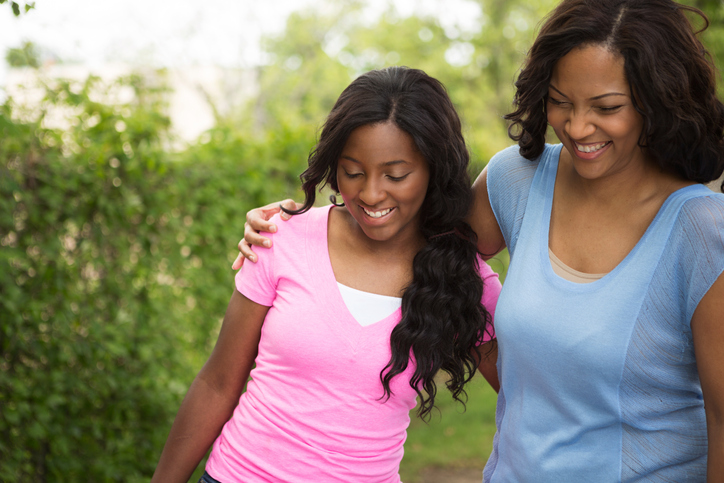By Dr. Dean Beckloff | Contributor
Coronavirus—COVID 19—is striking fear in the hearts of folks all over the world, in the U.S., in each of the states, in our cities, in our homes. Theaters, sporting events, Apple stores, Disney World, schools—and on and on are closing. Toilet paper has become a remarkable commodity. Governments are shutting down gatherings to maintain “social distancing.” It’s striking fear in each of us, and perhaps even in our kids. Anxiety is one of those things that we have by nature. We must have it so that we take care of ourselves well in a dangerous situation. All living things have the anxiety/fear response. And we humans have it too.
How do we help our kids with a valid, fearful response to COVID 19? How do we help kids with this legitimate fear who may be at different developmental levels? Since we ourselves have felt fear and anxiety in our lives, most of us parents want to relieve our kids of that cold, hard grip of fear. We don’t want them to feel it; we don’t want them to worry. Naturally, instinctively, we want to take that away from them and allow them to be kids. Here are some thoughts born out of working with kids and their parents:
Keep Life the Same. To the extent possible, keep on with life as we would normally. Most of us are washing hands more and using hand sanitizer. Our kids need to be taught to do that, of course! But as we incorporate new practices in our family, we want to also keep our regular practices and boundaries: getting up when expected, brushing teeth, taking a shower, dinner time, going to bed when expected. Those usual expectations help our kids to see that the world is turning as it should and normalizes life.
Talk to the Kids in a Developmentally Appropriate Way. With young kids, keep things simple. Introduce new rules for staying safe (washing hands more frequently, etc). Talk about ways to stay safe. Kids lean on your own leadership here, and as you lead, they will follow (not without fussing of course!). Middle schoolers and high schoolers should get more information. Not only will they be much more exposed to information around them, facts help calm the brain. Give facts and let them know that this virus, as we understand it now, might make them feel sick, but they will get over it.
Be Careful What You Communicate About Your Fear. This includes both what you say, and what you say nonverbally. Our kids don’t need to be taking care of our fears about the situation. It is our job as parents to not lay that burden on our kids. Don’t talk to anyone about your fears within earshot of the kids. Don’t think they aren’t listening—they want to eavesdrop. Please remember that. Also, they know our faces, eyebrows, smiles, etc. Try to be as normal as possible and keep life moving as it should. “Never let them see you sweat” is truly appropriate for our kids. Relax your face consciously, relax your jaw, your forehead, and the muscles in your face. You may be surprised how tense you’ve been keeping your face!
Just the Facts, Ma’am. Facts, facts, and more facts—be factual with the kids. Information helps us to get a handle on our fears, so obviously continue to grow in your information about the current threat, or any threat that might spur anxiety. Knowledge is power, and the facts can allay fears in our kids. Again, give them facts that are developmentally appropriate. Young children don’t need to know all the facts. Help them to continue to be kids—and have fun. This applies to teens too. We don’t want to rob them of their teen years. Help them to have fun whatever may be going on. But remember, facts help to build confidence and trust. “Kids worry more when they’re kept in the dark.” – Rachel Ehmke
Limit News Exposure. I’m a news junkie! I could keep the news on all the time—but resist that urge for the kids’ sake. They do not need the exposure to the anxiety and fear that comes through that medium. (And we don’t need it either, when there is so much that is unknown.) Turn off the news and help your kids to turn to activities. Help them to learn more about nature around them—figure out the types of birds and trees that are around. Get the focus on something else, including an art project or a LEGO project. Start a 1000-piece jigsaw puzzle that stays out for anyone to work on at any time. Break out board games and bake some cookies or have a make your own pizza night. With young children, have some floor time play time. Sit down and focus on play and having a good time, together.
Finally—Help Others. Help our kids, whether they are teens or younger, to realize that life has changed for now in order to help others. We are likely to be okay, even if we get sick. But practicing social distancing is to help others. This is especially true for those who are older and may have health issues—what any of us are doing or missing out on, is all about helping others. So perhaps we can focus on generosity. As John Lennon sang, we are a part of the brotherhood—and sisterhood—of all people. People are worth it, and we are doing what we are doing to help them out. When our kids feel that they can contribute to the well-being of others, that contributes to good, healthy self-esteem. Use the current situation as a time to build our kids’ values, and thus help build in them a healthy self-regard.
Editor’s Note: Dr. Dean Beckloff is a pediatric therapist and the founder of the Beckloff Behavioral Center in Dallas. If you wish to contact Dr. Beckloff, he can be reached at: DrBeckloff.com / 972.250.1700.


